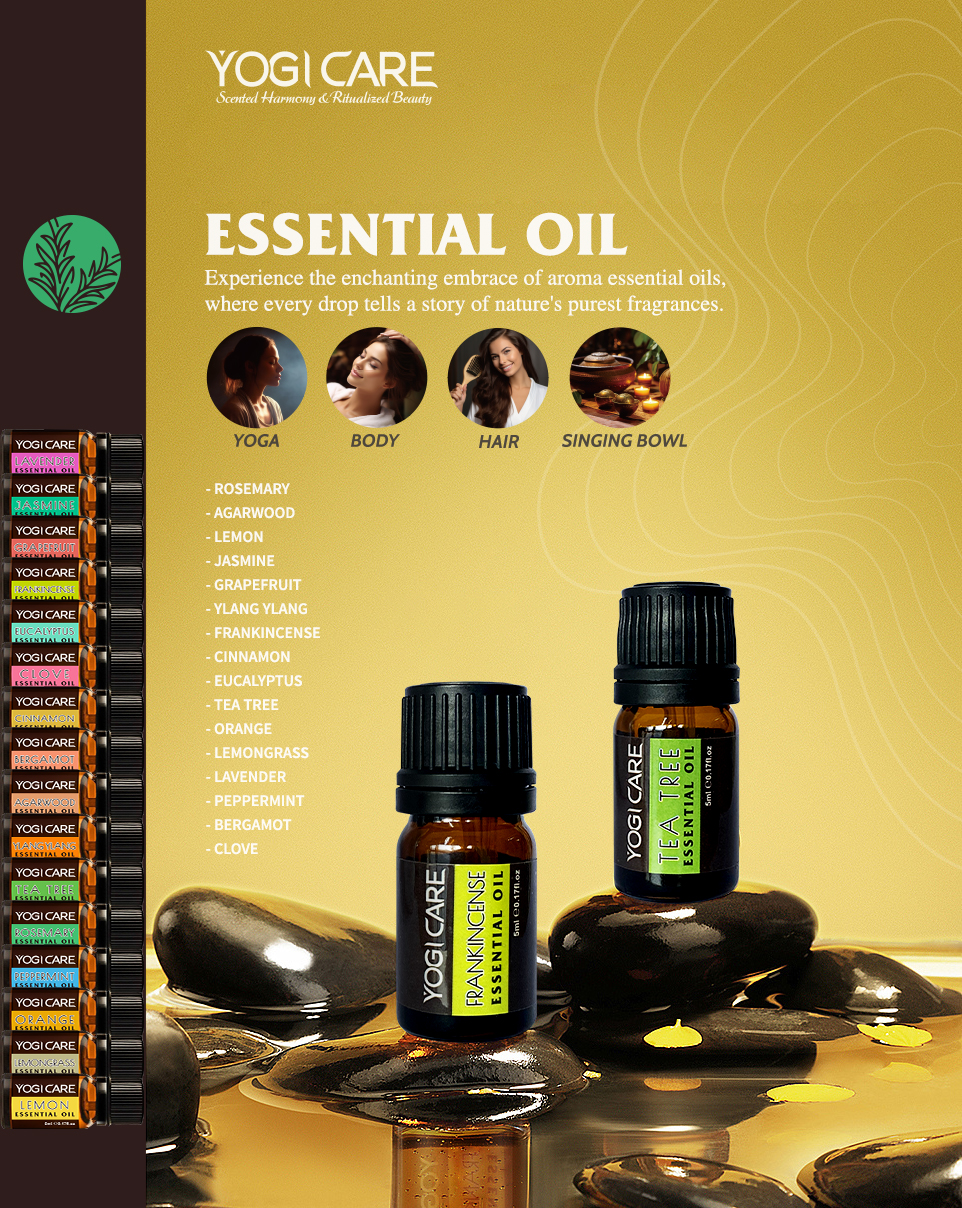Essential Oil Care: The Secret to Rejuvenating Your Hair-YOGI CARE Producer

"Experience the enchanting embrace of aroma essential oils, where every drop tells a story of nature's purest fragrances."
ESSENTIAL OIL
ROSEMARY / AGARWOOD / LEMON / JASMINE / GRAPEFRUIT / YLANG YLANG /FRANKINCENSE / CINNAMON / EUCALYPTUS / TEA TREE / ORANGE /LEMONGRASS / LAVENDER / PEPPERMINT / BERGAMOT / CLOVE
——
Essential oils have gained popularity in recent years for their numerous benefits in hair care. Derived from plants, these concentrated oils not only offer delightful fragrances but also possess therapeutic properties that can enhance the health and appearance of your hair. Here’s a look at some key benefits and how to incorporate essential oils into your hair care routine.
1. Nourishment and Hydration
Many essential oils, such as lavender, rosemary, and chamomile, are known for their nourishing properties. They can help hydrate the scalp and hair, reducing dryness and brittleness. Regular use can lead to softer, more manageable hair.
2. Promoting Hair Growth
Certain essential oils, including rosemary and peppermint, have been shown to stimulate hair follicles and improve circulation to the scalp. This can potentially promote hair growth and prevent hair thinning. Massaging these oils into the scalp can enhance their effectiveness.
3. Reducing Dandruff
Tea tree oil is well-regarded for its antifungal and antibacterial properties. It can help combat dandruff and relieve scalp irritation. Adding a few drops of tea tree oil to your shampoo or creating a diluted scalp treatment can provide relief from flakiness and itchiness.
4. Enhancing Shine
Essential oils like argan oil and jojoba oil can help add shine to dull hair. These oils can smooth the hair cuticle, making hair appear glossier and healthier. A few drops can be applied to the ends of your hair to achieve a radiant look.
5. Soothing Scalp Conditions
Essential oils such as lavender and chamomile have calming properties that can soothe an irritated scalp. If you suffer from conditions like eczema or psoriasis, these oils can provide relief when diluted and massaged into the scalp.
How to Use Essential Oils in Your Hair Care Routine
1.Dilution is Key:
Always dilute essential oils with a carrier oil (like coconut, jojoba, or almond oil) before applying to your hair or scalp. A good rule of thumb is to use about 5 drops of essential oil per tablespoon of carrier oil.
2.Scalp Massage:
Combine a few drops of your chosen essential oil with a carrier oil and massage it into your scalp. This not only helps with absorption but also improves blood circulation.
3.Add to Shampoo/Conditioner:
You can enhance your regular hair products by adding a few drops of essential oil. This is a simple way to integrate their benefits into your routine.
4.Hair Masks:
Create a nourishing hair mask by mixing essential oils with natural ingredients like honey, yogurt, or avocado. Apply the mask to your hair, leave it on for 30 minutes, then rinse thoroughly.
5.Aromatherapy:
Simply inhaling the aroma of certain essential oils can also have beneficial effects on stress levels, which can indirectly support hair health. Consider using a diffuser or adding a few drops to your bath.
Conclusion
Incorporating essential oils into your hair care routine can offer a variety of benefits, from promoting growth to soothing the scalp. As with any new treatment, it's important to perform a patch test to ensure you don’t have any adverse reactions. With the right oils and application methods, you can achieve healthier, more vibrant hair naturally.